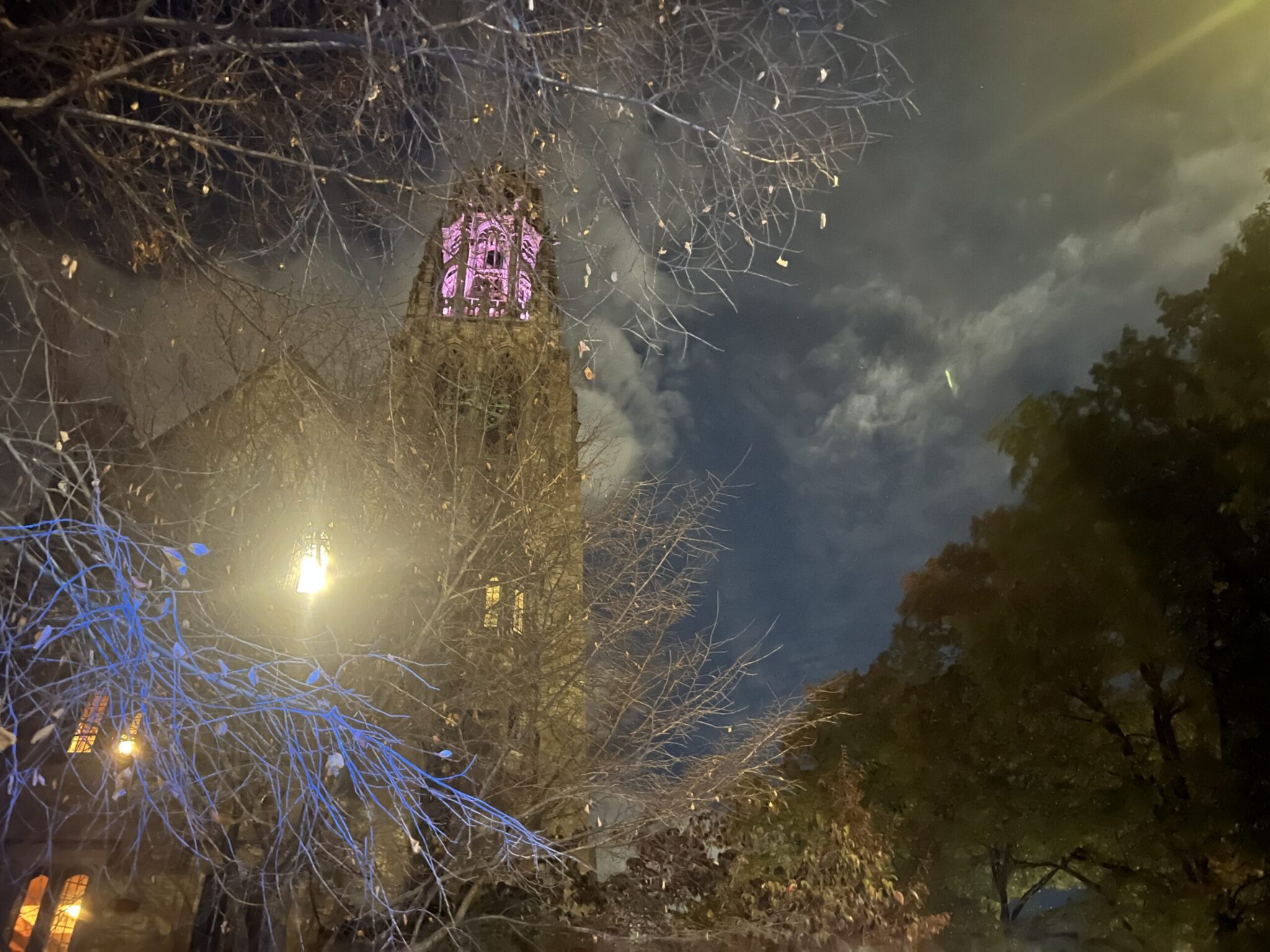New Haven Ghost Walk reveals spooky secrets
The Ghost Walk, which stops at multiple buildings on Yale’s campus, discusses the legends and secrets of downtown New Haven.

Lily Belle Poling, Contributing Photographer
Yale’s campus is haunted, with ghosts roaming throughout the University — at least, that’s what one local tour is telling visitors.
Every Friday and Saturday night, the New Haven Ghost Walk takes the bravest visitors through downtown New Haven and Yale’s campus to tell the tales of legends and secrets kept over decades. The tour hits the most haunted highlights and details the history of New Haven and Yale’s spookiest spots.
In a YouTube video linked on the Ghost Walk’s website, President of Ghost Walks USA Philip Schoenberg advertised the experience as a “hauntingly good time.”
The 8:30 p.m. tour on Oct. 28, which had approximately 20 attendees, began with a stop at Vanderbilt Hall — supposedly Yale’s spookiest residence hall. Tour guide John Degon said that there is an ominous door on the first floor that is always locked — so sinister that not even curious first-year students try to open it.
According to Degon, this door is only ever opened when a student from the Vanderbilt family is admitted to Yale, filling the “Vanderbilt suite” that hides behind the mysterious door. These students are much more stressed than the average Yalie because legend has it that Cornelius and Albert Vanderbilt haunt this suite, pressuring the young Vanderbilt to put their nose to the “grindstone.”
The guide also claimed that throughout the years students have reported seeing a large man strolling the roof of Vanderbilt Hall. Degon said that he suspects it is Cornelius Vanderbilt haunting the residence hall, making sure the students in his namesake dormitory do nothing less than honor his name in their academic performance.
“I can’t believe there’s a ghost on my roof and I’ve never heard about it,” Sofia Arbelaez ’27 told the News. “It felt straight out of a movie.”
The tour’s next stop was at the Skull and Bones building on High Street, home to Yale’s oldest secret society infamous for its powerful alumni and many conspiracy theories. Known as “The Tomb,” the hall is rumored to contain bones, souvenirs and trinkets.
Legend has it that one such set of bones belongs to Geronimo, a leader of the Chiricahua Apache who resisted colonization in the Southwest. After Geronimo’s death in the Apache prison camp in Fort Sill, Oklahoma, where the U.S. government had forced him into hard labor, it is rumored that Prescott Bush — father and grandfather to former presidents George Bush and George H.W. Bush, all three of whom were members of Skull and Bones — stole Geronimo’s remains and sent them to the Skull and Bones tomb in New Haven.
In 2010, a federal judge dismissed a lawsuit filed by descendants of Geronimo claiming that his remains were stolen by students in the society in 1918.
Degon said that on one cold and foggy March night, he “saw something on the roof of Skull and Bones while talking about Geronimo,” watching his tour group.
Degon said he believes this figure was the ghost of Geronimo.
Degon also detailed the disturbing history of the Milgram experiment at a stop at Linsly-Chittenden Hall, where the experiment took place in 1961. Stanley Milgram, a psychologist and professor at Yale, examined how far people would go in obeying an instruction to harm another person. Milgram reported he found that most of his subjects would go as far as killing another person if under strict orders. Milgram faced backlash for the experiments, which critics said violated research ethics. According to Degon, all of Milgram’s equipment remains in Linsly-Chittenden Hall, gathering dust and locked away in the basement.
As the tour group moved to Harkness Tower, Degon told a few gory stories about the tower’s grisly history. He said that five different workers plummeted to their deaths during the 10 years of construction on the tower. The News was unable to find any information online supporting Degon’s claim.
Later on, according to Degon, students protesting the Vietnam War led a cow to the top of Harkness Tower. He said that the cow, named Janis Joplin, was left up there for four days as it is difficult for cows to walk backward or down stairs, and eventually died. The cow was then removed in pieces from the top of the tower, Degon said. The News was also unable to find any information online verifying Degon’s claims.
“When the bells are ringing at noon, you can still hear Janis mooing between the ringing of the bells,” Degon told the group.
Degon told the group that he recalled having lunch near the tower and hearing the sounds of a distraught cow amid the bells and the everyday chatter.
Finally, the tour made it to the Grove Street Cemetery. Degon said that in the 19th century, students in the School of Medicine dug tunnels to the cemetery to steal cadavers for their experiments. He said that two tunnels still exist under Yale’s campus and next to the cemetery, one of which, he said, is rumored to contain jars full of brains.
Patricia Illingworth, the cemetery’s chief docent told the New York Times in 2015, “trust me, there are no tunnels, and no one took bodies from here.”
The city of New Haven was founded in 1638.







